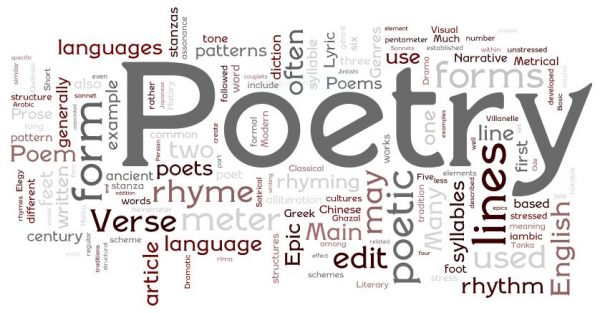Throughout history, poets have used language to express their thoughts, feelings, ideas and perspectives.
Poets have addressed everything from the nature of love or the beauty of a spring day to complex social issues by using rhythm, rhyme, meter and line breaks. Middle and high school students can gain a greater understanding, not only of literature and language, but of themselves and the world they live in by studying poetry.
Language Awareness
Poetry can increase students’ literacy and linguistic awareness, according Dr. Janette Hughes, in a research report for the Literacy and Numeracy Secretariat of Ontario. Studying poetry can help students to expand their oral and written vocabularies. Reading and writing poetry also helps students to become more mindful of the ways in which language can be used and the rhythms, images and meanings that can be created.
Critical Analysis
According to a 2002 study by California Poets in Schools, students who study poetry in the classroom increase their skills of critical analysis. Poems use a variety of techniques, metaphor, imagery, rhyme and meter, to impart meaning. Picking out these techniques and thinking about how they function in the poem help students to develop their analytic and critical skills. Poems can also have multiple layers of meaning that readers must analyze carefully to understand.
Creativity and Enthusiasm
Students can become very enthusiastic about poetry in the classroom, connecting their reading experiences to their experiences of music and their own lives. Allowing students to write poetry for class pushes them to express themselves creatively. Though some students may not be motivated by writing academic papers, poetry allows them to play freely with words, rhythms and ideas. For example, Lewis Carroll’s poem “The Jabberwocky” uses made-up words like “mimsy” and “borogoves” to play creatively with rhythm, sound and language.
Community
Poetry in the classroom helps students to connect to others. Poetry encourages students to view the complexities of the world in new ways and to develop empathy and understanding for other points of view. For instance, Elizabeth Bishop’s “In the Waiting Room” describes a girl’s experience of the deep connections that exist between people and her discovery of what “held us all together/or made us all just one?” Discussing poetry in the classroom can also help to develop connections between students, encouraging them to think about the different ways that their classmates interpret the poems.

